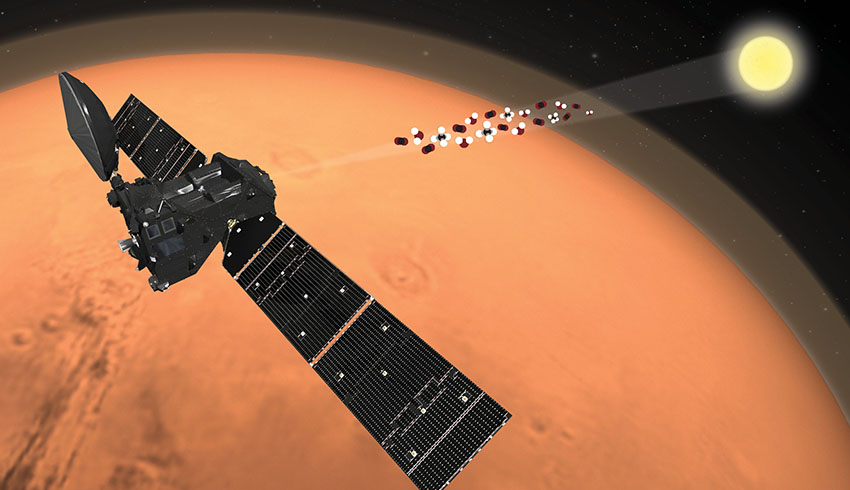Mars is often referred to as the Red Planet, due to the characteristic hue of its orb in the sky. Up close, however, the planet is actually covered in all manner of colours – from bright whites and dark blacks to yellows, reds, greens, and the cappuccino tones seen here.
These differences in colour are visible from telescopes on Earth. They are undeniably visually striking but also reveal a significant amount about the composition and properties of the surface material itself.
These views based on Mars Express data are a great example of the diversity found on the Martian surface: the darker regions towards the right (north) in the image at the top of this page are rich in minerals of volcanic origin, the most common of which found on Mars is basalt. The lighter patches to the left (south) are instead largely covered in fine silicate dust.
Mars is thought to have once seen significant volcanic activity. The planet hosts some of the largest volcanoes in the solar system, including the very biggest, Olympus Mons, and has several notable volcanic provinces.
The volcanoes within these regions once released ash and dust that covered and coated the surface of Mars, forming dark basaltic sands that were swept around and covered up by other material over time.
The largest crater in the image measures 25 km across and is 300 m deep – this relatively shallow depth is likely due to the crater being filled up with other material since its formation. Surrounding this crater are various plains, valleys, and “mesas” – steep-sided mounds rising up from the Martian surface.
Another group of dark but larger, wind-formed features known as “wind streaks” can be seen near the centre-left of the image at the top of the page – shown below also as an anaglyph. These form in a similar way to dust devil tracks, except that they are caused not by eddies, but by local winds being forced over topographic features such as craters or cliffs.
Because of this, streaks can appear to emanate from these features. Wind streaks are useful indicators in atmospheric studies; for instance, the wind that formed the streaks in this image was blowing in a roughly south-easterly direction (given that north is to the right).
Whether altered by water, wind, impact or other means, the surface of Mars is a dynamic environment – and ESA’s Mars Express, in orbit around Mars since 2003, has managed to capture all manner of phenomena on the Red Planet over the last 16 years.
Using instruments like the high resolution stereo camera responsible for these new images, the spacecraft has watched as giant dust storms kicked up material into the airto obscure wide regions of the surface from view, spotted signs of ancient sub-surface water systems that hint at the planet’s wetter past, and probed the Martian atmosphere for signs of molecules we know to be linked to life on Earth.
It has found signs of tectonic activity at far more recent timescales than previously thought, watched strange clouds form and dissipate with the seasons, explored the patches of ice found at Mars’ northern and southern poles, and characterised the planet’s two small, mysterious moons, Phobos and Deimos.
ESA’s fleet at Mars grew with the arrival of the ESA-Roscosmos ExoMars Trace Gas Orbiter in 2016, which has been making a detailed analysis of the planet’s atmosphere and mapping its surface. Next year, the ExoMars Rosalind Franklin rover and its accompanying surface science platform will be launched to further our understanding of Mars from the planet’s intriguing surface.

